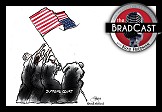Guest Blogged by Rady Ananda...
"The voting industry sells crap, and that is the problem."
-Douglas A. Kellner, Co-Chair New York State Board of Elections
I received a cache of documents surrounding NY's electoral system. Some of this material indicates justified resistance to computerized systems that fail to perform as intended, despite being certified. Some exposes deliberate info-suppression, preventing election officials from acting in the best interest of the public. One NY attorney extensively researched NY's election law history, showing the wisdom and security of prior law. A University of Virginia professor researched lever voting machines and provides a dire warning about new technology with its paper-based audit trail. This lengthy piece synthesizes the material for those interested in New York's battle to retain election integrity or to implement wholly condemned systems that have failed across the nation.
New York doesn't use computerized voting systems. For over a century, it has protected election integrity by using a mechanical lever voting system that can be reliably tested, combined with a brilliant legislative scheme that anticipates every opportunity for election fraud – from insiders and from voters; from before, during and after the election. Yet, New York may join the 49 other lemming states in electoral suicide, if its 2005 Election Reform and Modernization Act (ERMA) goes into effect.
Problems continue to emerge across the nation with the use of computerized voting systems, and none of the vendors hawking computerized technology meet NY's guidelines for doing business only with responsible vendors. Last year, Attorney Andi Novick sent a 60-page, well-researched memo to NY officials, providing details of the shady connections, failed performance, and efforts of vendors to suppress damning evidence of their product. She later supplemented that research with a 21-page memo.
NY Loves Its Levers
The Help America Vote Act (HAVA) does not require states to buy irredeemable computerized voting systems. Lever voting systems satisfy all but one of HAVA's requirements, as Douglas Kellner, Co-Chair of the New York State Board of Elections (SBOE) testified:
Most NY officials have not been blinded by the glitz of high-tech wizardry. NY has kept its levers for the past six years, while elections across the nation crashed, glitched, and otherwise left the public even less confident in US elections. NY kept its levers when the nation switched to punchcard systems, which eventually brought us Florida's 2000 "election." Kellner decried these failed computerized systems at a June 19th SBOE meeting:
With the scanners I'm not going to get caught in this bargain with the devil. If the vendors do not have a product that today complies with the guidelines, I'm not prepared to use it.
And I'm prepared to go back to Judge Sharpe and to say: 'Judge, it would be unconstitutional to enforce [HAVA] by requiring us to replace the lever voting machines with scanning equipment or DRE equipment or any equipment that does not comply with the current guidelines.'
In naming Judge Sharpe, Kellner is referencing the 2006 Dept. of Justice lawsuit against the SBOE for failure to implement disabled-accessible voting devices and a statewide computerized voter database as required by HAVA.
Also resisting the effort to employ expensive gadgets that don't work is a mounting revolution on both sides of the aisle. Republican commissioner Gregory Peterson, newly appointed to the SBOE, expressed his bafflement at that June 19th meeting:
NY Experiences Software Failure
In accord with Judge Sharpe's order, NY must install disabled-accessible voting devices in the Fall 2008 election. Testing is underway, with three systems approved: Sequoia/Dominion Imagecast, ES&S Automark, and Premier (formerly Diebold) Automark.
According to documents received, newly certified Ballot Marking Devices (BMD) failed to perform in local tests in New York City, and in Nassau County. After meeting with the New York County Election Commissioners Assn., SBOE Co-Executive Director, Todd Valentine, described the scene after certified software failed to perform:
Valentine's comments also relate to state and county anxiety over the necessary training election workers must receive.
Only 15% of state-certified BMDs arrived in working condition in Nassau County. One-fifth of them were physically damaged; at over $11,000 each, the frailty of such systems cannot be ignored. Fully two-thirds of Sequoia's BMDs failed local diagnostic and acceptance testing. On June 26th, Nassau County Attorney Lori Barrett wrote to Judge Sharpe:
· 29 were rejected immediately when they were unloaded from the truck because of obvious physical defects or damages....
· 62 failed diagnostic testing because of problems with the USB cord and the printer.
· And 42 failed Nassau's acceptance testing for a variety of reasons, such as non-responsive key pads and battery failure.
Out of a total of 156 BMDs, only 23 can be used by voters in the condition they were received....
Barrett points out that "Nassau County is not the only municipality affected by the SBOE's unreliable testing." She explains:
Problems in a software driven voting system that is certified as safe and functional? Say it ain't so.
Hidden Costs of Software Systems
Absorbing additional unexpected costs, Barrett continues in her letter to the SBOE:
Nassau County made numerous requests to the SBOE to test the BMDs in Nassau County, and we understand that Suffolk County and New York City made similar requests for local testing. The SBOE, however, has refused or failed to act on these requests and taken no meaningful steps to address the problem.
Dutchess County is paying an additional $56,250 for the delivery, storage and overhead costs (security and climate-controlled environment) for its BMDs, reported the Poughkeepsie Journal.
But wait, it gets worse. The point of a BMD is to print a ballot from a disabled-accessible voting device. Yet it failed to perform its primary function, and Sequoia knew it didn't work, as did the SBOE.
Barrett continues:
Think about this a moment: an $11,500 ballot printing device (plus $250 for shipping, plus local testing costs, etc.) failed to print the ballots, which Sequoia understood to be a systemic problem, and which warning the SBOE failed to send to counties.
Counties are justifiably anxious and angry about the new systems, with their exorbitant price tag, their failure to perform, their fragility, and the additional pollworker training required. All of these factors hamper the ability of election administrators to run sound elections. No wonder NY's election officials have hung on to their levers for six years, while the rest of the nation was hoodwinked into buying "crap."
State and federal money covered 95% of Dutchess County's $1.8 million for 155 Sequoia BMDs, leaving Dutchess with a $95,000 BMD bill, plus another $56,000 for transport, storage and overhead. Republican elections Commissioner, David Gamache, commented last Friday:
Software Cannot Be Reliably Certified
As the SBOE certifies nonfunctional equipment, it learns to its dismay that software cannot be certified. Avi Rubin explained this pretty well last year:
Software is designed to be upgraded, and patch management systems are the norm. A certification system that requires freezing a version in stone is doomed to failure because of the inherent nature of software.
The History of Levers
Historical experience favors nuts-and-bolts technology over fragile paper that can easily be lost, destroyed or altered. Anyone who has researched the history of US election fraud is well aware how easy it is to defraud a paper ballot voting system.
Professor Bryan Pfaffenberger of the University of Virginia Dept. of Science, Technology & Society was awarded a National Science Foundation grant to study the lever voting machine. In Machining the Vote, he defends levers, which were designed with an eye toward paper ballot fraud, as superior to newer systems:
Research conducted for the U.S. Election Assistance Commission confirms what Pfaffenberger found. An election day survey of the 2004 Presidential election conducted by Election Data Services showed that NY had a statewide undervote rate in the presidential race of just 0.77% --- among the lowest in the nation. (Ch.8, p.15) Levers do not permit overvotes nor, unlike software-driven systems, switched votes (where a voter chooses one candidate, but the touch screen or optical scanner displays and/or records a different choice).
Imagine how different the outcomes might have been in the 2000 and 2004 elections had levers been used instead of unreliable, exploitable, software-driven systems that counted easily altered, lost or destroyed punchcards. Professor Pfaffenberger details a history we are well advised to remember, especially in light of the punchcard shenanigans in Florida and Ohio:
All of these technologies produced paper records, however, and all were flatly rejected, both by voters and election officials, as letting the possibility of fraud in through the back door.
Today, there are widespread calls to bring paper back into the picture, but the reason is that people do not trust the machines. Having studied the history, I strongly believe that there would be no such call for paper if the ugly history of fraudulent practices enabled by paper ballots were known --- unfortunately, the American people have forgotten the lessons they learned a century ago, and I greatly fear that we will have to repeat them in order to learn them again. (emphasis added)
Those who fail to learn history are doomed to repeat it. Pfaffenberger's point is well taken: our call for hand-counted paper ballots is directly related to our distrust of computerized voting systems and our ignorance of how prone a paper audit trail is to fraud. His warning relates specifically to paper-based systems:
Lever machines were designed to remove paper; this feature was deliberate given how easy paper is to alter, lose or destroy. There was to be no recount, because, as Andi Novick explains below in NY's Election Law History, it was:
We certainly learned that in Ohio during the 2004 recount. Two employees from Cuyahoga, Jacqueline Maiden and Kathleen Dreamer, were convicted of tampering with the recount, resulting in felony convictions that were later expunged from their records. New York has wisely recognized the vulnerabilities of post-election recounts, and forbidden them by law.
Documented Lever Failures in NY
No voting system is perfect. Of 18,234 lever machines used in New York in 2006, a total of 1,036 problems requiring service were reported to the NY SBOE. The time to fix such problems ranged from less than a minute to up to 2 hours (in one county), but most counties fixed the lever problem within 15 minutes.
Of 18,234 machines, only 23 stopped working, and could not be repaired during Election Day – a failure rate of about 1/8 of 1% (0.126%), which stands in stark contrast to the 66% failure rate of certified electronic BMDs that Nassau County tested this month.
While the failure rate was a remarkable 0.126%, the breakdown rate of these 40-year-old lever machines in 2006 was 5.68%. The 2004 breakdown and failure rates during the presidential election were slightly higher than 2006: 6.38% and 0.15% (1/6 of 1%), respectively. Can anyone imagine a computer or a printer lasting this long?
Paper trail fan William Edelstein, who obtained the NY documentation, calculated breakdown percentages which ranged from 1.7 to 6.8% over the years 2000-2006. He expressed this concern:
We showed this material to Professor Pfaffenberger, who replied:
He adds the "exception of counter failure," which would be caught during maintenance and testing. He summarizes:
Not so with software-driven systems. NY is cautioned that federal standards allow much higher failure rates of any duration for touchscreens and optical scanners (almost 10%), nearly twice the 2006 lever breakdown rate of 5.68%, and 72 times the lever failure rate of 0.126%.
By enacting ERMA, the NY legislature reveals its failure to recognize the fundamental difference between mechanical and software engineering. Software is undetectably mutable, whereas any tampering to a lever machine is plainly visible to those election officials, party representatives and media who observe the machine during pre-election testing or post-election, when the vote totals are transcribed.
The post-election process is minutely detailed, allowing election officials, citizen watchers, party representatives and media to observe the tallies as they are transcribed from the machine onto paper.
NY's Election Law History
To understand the wisdom of the electoral scheme prior to ERMA, attorney Andi Novick summarizes her research and provides her legal analysis when comparing NY's past electoral scheme with its 2005 scheme:
[S]ince 1896, the Election Law has required contemporaneously created record evidence of the count or of fraud. A verified, completed count, publicly recorded and announced at each poll site on election night, before the aggregate of the total votes is known, is still mandated.
For 231 years New York's electoral system has protected the safeguarded election night-count from corruption by forbidding post-election recounts, it being historically understood that once the ongoing public scrutiny of the poll site ended and the results of the election night count were known, the count was at greater risk of subsequent tampering.
The newly enacted legislative scheme represents an unprecedented and unconstitutional reversal of existing and long-standing presumptions and requirements, permitting vote counting for the first time to be performed by concealed, undetectably mutable software.
Repeated scientific studies have shown software-driven voting machines to be vulnerable to unseen tampering and incapable of providing trustworthy election results. New York's Legislature recognizes that the software-generated election-night count is not reliable and proposes to first attempt to verify and complete the count after the election with a partial hand count.
Not only does the State unconstitutionally bifurcate the canvass, but its choice of a software-driven system further undermines constitutional safeguards by eliminating contemporaneously created evidence (or any evidence) of the count or of fraud. Indeed, because software cannot be secured, both the ballots and the evidence of how they were counted can be manipulated - leaving no trace of the crime.
Pursuant to ERMA, New York will no longer strive to count every vote: in fact none of the votes will be securely counted. Instead the State will use computers to produce a questionable count and once the election is over and the results announced, will then check the uncertain count by performing a manual count of a small portion of ballots that may or may not have been tampered with and therefore are not representative of the actual ballots cast on election night.
In Count Every Vote, I expand on this last point: Because repeated scientific studies show that software-driven voting systems provide us with no rational basis to trust reported results, in those jurisdictions that use computerized voting systems and that do audit the voter-completed ballot, only a tiny percentage of all ballots cast is reliably counted. This represents well over 90% of US elections with less than 5% of all ballots reliably counted.
Unless the audit is done at the precinct, on election night, before observers of different political faith, Novick points out that even the audit count is not reliable, since continuous observation of the ballots ends after election night. Once this chain of custody is broken, there is no proof that the ballots counted during the audit "represent the actual ballots cast at election."
New York's 2005 electoral scheme (ERMA) seeks to mimic this unsound and unconstitutional practice of only counting a small percentage of all ballots cast, allowing the audit to be performed two weeks after the election, when continuous observation of the ballots has long ended.
New York has a choice right now. It can stand its ground, as it has for the past six years, and save its sound, secure, functioning electoral system, or it can follow the rest of the nation over the cliff by implementing non-securable, unreliable, computerized voting technology that removes all rational basis for confidence in reported results.
The ship has not yet sailed, New York: save the levers.
UPDATED Prior To Posting: On July 1st, Nassau County Attorney Lori Barrett sent another letter to the Judge, demanding the non functioning machines be addressed. Sequoia continues to ignore Nassau’s demands to repair damaged and non-functional machines, while the SBOE continues shipping damaged and non functional products to Nassau. The SBOE’s mitigation efforts compromised the security of software-driven ballot marking devices (BMDs).
Barrett writes:
The NY SBOE has been shipping the BMDs with a new type of plastic security seal instead of the prior metal seal which had been apparently damaging the BMDs in earlier shipments. These new seals are evidently less secure as several BMDs have arrived … with broken security seals and there is no way for Nassau County to make sure that the BMDs have not been tampered with. (emphasis added)
Sequoia and the SBOE turn a deaf ear to these problems. Barrett explains:
She asks the court to order Sequoia to fix its machines and have the SBOE certify them in Nassau County. She closes with:
1. Directing the SBOE to immediately demand that Sequoia resolve its manufacturing problems; and
2. As requested in our letter June 26, 2007, directing that all future acceptance tests of BMDs designated for Nassau be conducted in Nassau County at the Nassau County Board of Elections facility.
Without swift action, Nassau County, through no fault of its own, may be unable to provide functioning BMDs in the majority of polling places in the Fall 2008 elections. (emphasis in original)
Cross posted at OpEdNews...


 Meanwhile... :
Meanwhile... : 'Green News Report' 7/11/24
'Green News Report' 7/11/24
 Paging 'Johnny Unbeatable'! Dems in Disarray! (But Really This Time): 'BradCast' 7/10/24
Paging 'Johnny Unbeatable'! Dems in Disarray! (But Really This Time): 'BradCast' 7/10/24 SCOTUS Immunity Ruling 'As Bad as it Sounds', Arguably Worse: 'BradCast' 7/9/24
SCOTUS Immunity Ruling 'As Bad as it Sounds', Arguably Worse: 'BradCast' 7/9/24 'Green News Report' 7/9/24
'Green News Report' 7/9/24 So, What Now?:
So, What Now?: Overdue Debunking of MAGA Cult Xenophobia
Overdue Debunking of MAGA Cult Xenophobia Sunday 'Courting Disaster' Toons
Sunday 'Courting Disaster' Toons Sunday 'Bad Medicine' Toons
Sunday 'Bad Medicine' Toons A Friendly Suggestion:
A Friendly Suggestion: Former Fed Prosecutor: SCOTUS Corruption Ruling Less Corrupt Than Appears: 'BradCast' 6/27/24
Former Fed Prosecutor: SCOTUS Corruption Ruling Less Corrupt Than Appears: 'BradCast' 6/27/24 'Green News Report' 6/27/24
'Green News Report' 6/27/24 Good News and Bad: At the Polls and From the Corrupted Court: 'BradCast' 6/26/24
Good News and Bad: At the Polls and From the Corrupted Court: 'BradCast' 6/26/24 'Not Something Journalists Do': A NatSec Journo on Assange Hacking, Plea Deal: 'BradCast' 6/25/24
'Not Something Journalists Do': A NatSec Journo on Assange Hacking, Plea Deal: 'BradCast' 6/25/24 'Green News Report' 6/25/24
'Green News Report' 6/25/24 Fox 'News' Grooming Viewers for Another Insurrection: 'BradCast' 6/24/24
Fox 'News' Grooming Viewers for Another Insurrection: 'BradCast' 6/24/24 Sunday 'Shark Jumping' Toons
Sunday 'Shark Jumping' Toons The Prophecy and Warning of the White Buffalo: 'BradCast' 6/20/24
The Prophecy and Warning of the White Buffalo: 'BradCast' 6/20/24 'Green News Report' 6/20/24
'Green News Report' 6/20/24 CA Biz Group, WSJ 'Fabricate' $20/hr Fast Food Wage Stats: 'BradCast' 6/19/24
CA Biz Group, WSJ 'Fabricate' $20/hr Fast Food Wage Stats: 'BradCast' 6/19/24 Interference Threats Loom Over November's Presidential Election: 'BradCast' 6/18/24
Interference Threats Loom Over November's Presidential Election: 'BradCast' 6/18/24 Inside White House Press Corps During Trump/COVID Era: 'BradCast' 6/17/24
Inside White House Press Corps During Trump/COVID Era: 'BradCast' 6/17/24 The Corrupt Anti-Abortion TX-to-SCOTUS Legal Mill Pipeline: 'BradCast' 6/13/24
The Corrupt Anti-Abortion TX-to-SCOTUS Legal Mill Pipeline: 'BradCast' 6/13/24 Hunter Conviction; Trump's Weaponized Ignorance: 'BradCast' 6/11/24
Hunter Conviction; Trump's Weaponized Ignorance: 'BradCast' 6/11/24 After Trump Verdict, GOPers Suddenly Warm to Voting for Felons: 'BradCast' 6/10/24
After Trump Verdict, GOPers Suddenly Warm to Voting for Felons: 'BradCast' 6/10/24 SCOTUS Has Been Undermining American Democracy for 50 Yrs: 'BradCast' 6/6/24
SCOTUS Has Been Undermining American Democracy for 50 Yrs: 'BradCast' 6/6/24 What Happens in Texas Does NOT Stay in Texas: 'BradCast' 6/5/24
What Happens in Texas Does NOT Stay in Texas: 'BradCast' 6/5/24
 VA GOP VOTER REG FRAUDSTER OFF HOOK
VA GOP VOTER REG FRAUDSTER OFF HOOK Criminal GOP Voter Registration Fraud Probe Expanding in VA
Criminal GOP Voter Registration Fraud Probe Expanding in VA DOJ PROBE SOUGHT AFTER VA ARREST
DOJ PROBE SOUGHT AFTER VA ARREST Arrest in VA: GOP Voter Reg Scandal Widens
Arrest in VA: GOP Voter Reg Scandal Widens ALL TOGETHER: ROVE, SPROUL, KOCHS, RNC
ALL TOGETHER: ROVE, SPROUL, KOCHS, RNC LATimes: RNC's 'Fired' Sproul Working for Repubs in 'as Many as 30 States'
LATimes: RNC's 'Fired' Sproul Working for Repubs in 'as Many as 30 States' 'Fired' Sproul Group 'Cloned', Still Working for Republicans in At Least 10 States
'Fired' Sproul Group 'Cloned', Still Working for Republicans in At Least 10 States FINALLY: FOX ON GOP REG FRAUD SCANDAL
FINALLY: FOX ON GOP REG FRAUD SCANDAL COLORADO FOLLOWS FLORIDA WITH GOP CRIMINAL INVESTIGATION
COLORADO FOLLOWS FLORIDA WITH GOP CRIMINAL INVESTIGATION CRIMINAL PROBE LAUNCHED INTO GOP VOTER REGISTRATION FRAUD SCANDAL IN FL
CRIMINAL PROBE LAUNCHED INTO GOP VOTER REGISTRATION FRAUD SCANDAL IN FL Brad Breaks PA Photo ID & GOP Registration Fraud Scandal News on Hartmann TV
Brad Breaks PA Photo ID & GOP Registration Fraud Scandal News on Hartmann TV  CAUGHT ON TAPE: COORDINATED NATIONWIDE GOP VOTER REG SCAM
CAUGHT ON TAPE: COORDINATED NATIONWIDE GOP VOTER REG SCAM CRIMINAL ELECTION FRAUD COMPLAINT FILED AGAINST GOP 'FRAUD' FIRM
CRIMINAL ELECTION FRAUD COMPLAINT FILED AGAINST GOP 'FRAUD' FIRM RICK SCOTT GETS ROLLED IN GOP REGISTRATION FRAUD SCANDAL
RICK SCOTT GETS ROLLED IN GOP REGISTRATION FRAUD SCANDAL VIDEO: Brad Breaks GOP Reg Fraud Scandal on Hartmann TV
VIDEO: Brad Breaks GOP Reg Fraud Scandal on Hartmann TV RNC FIRES NATIONAL VOTER REGISTRATION FIRM FOR FRAUD
RNC FIRES NATIONAL VOTER REGISTRATION FIRM FOR FRAUD EXCLUSIVE: Intvw w/ FL Official Who First Discovered GOP Reg Fraud
EXCLUSIVE: Intvw w/ FL Official Who First Discovered GOP Reg Fraud GOP REGISTRATION FRAUD FOUND IN FL
GOP REGISTRATION FRAUD FOUND IN FL


































